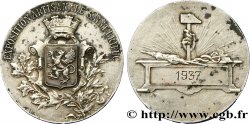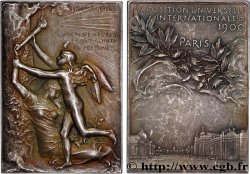E-auction 588-547101 - fme_936070 - III REPUBLIC Médaille, Grand concours de musique
You must signin and be an approved bidder to bid, LOGIN TO BID. Accounts are subject to approval and the approval process takes place within 48 hours. Do not wait until the day a sale closes to register. Clicking on « bid » constitutes acceptance of the terms of use of cgb.fr private e-auctions.
Bids must be placed in whole Euro amounts only. The sale will start closing at the time stated on the item description; any bids received at the site after the closing time will not be executed. Transmission times may vary and bids could be rejected if you wait until the last second. For further information ckeck the E-auctions F.A.Q.
NO BUYER'S FEE.
NO BUYER'S FEE.
| Estimate : | 20 € |
| Price : | 4 € |
| Maximum bid : | 6 € |
| End of the sale : | 22 July 2024 20:38:40 |
| bidders : | 3 bidders |
Type : Médaille, Grand concours de musique
Date: 1886
Mint name / Town : 78 - Poissy
Metal : brass
Diameter : 28 mm
Orientation dies : 12 h.
Weight : 4,01 g.
Edge : lisse
Puncheon : sans poinçon
Coments on the condition:
La patine est sombre et hétérogène. Présence de taches et de concrétions. Des marques d’usure et des petits coups sont également visibles
Obverse
Obverse legend : RÉPUBLIQUE - FRANÇAISE.
Obverse description : Tête de Marianne à droite, une couronne de lauriers et de chêne dans les cheveux.
Reverse
Reverse legend : SOUVENIR DU GRAND CONCOURS - POISSY // INTERNATIONAL / DE / MUSIQUE / D’HARMONIE / D’ORPHEON / ET FANFARES / - / 27 JUIN 1886.
Reverse description : Légende circulaire et 7 lignes horizontales.
Commentary
Dimension sans bélière 23 mm
Fondé par Wilhem en 1833, le mouvement des orphéons, appelés également Sociétés chorales ou Sociétés orphéoniques, était un mouvement festif et musical de masses. Il rassemblait, en France, puis aussi dans d'autres pays, des milliers de chorales masculines le plus souvent subventionnées par des entreprises ou des municipalités. Elles étaient constituées de chanteurs issus des classes moyennes ou populaires. Par la suite, des femmes purent également y participer.
Quantité de grands concerts et défilés furent organisés. Ils pouvaient rassembler jusqu'à des milliers de choristes devant des dizaines de milliers d'auditeurs.
Largement oublié en France, sauf au pays basque et dans le sud-ouest, ce mouvement est toujours très important en Catalogne..
Fondé par Wilhem en 1833, le mouvement des orphéons, appelés également Sociétés chorales ou Sociétés orphéoniques, était un mouvement festif et musical de masses. Il rassemblait, en France, puis aussi dans d'autres pays, des milliers de chorales masculines le plus souvent subventionnées par des entreprises ou des municipalités. Elles étaient constituées de chanteurs issus des classes moyennes ou populaires. Par la suite, des femmes purent également y participer.
Quantité de grands concerts et défilés furent organisés. Ils pouvaient rassembler jusqu'à des milliers de choristes devant des dizaines de milliers d'auditeurs.
Largement oublié en France, sauf au pays basque et dans le sud-ouest, ce mouvement est toujours très important en Catalogne..








 Report a mistake
Report a mistake Print the page
Print the page Share my selection
Share my selection Ask a question
Ask a question Consign / sell
Consign / sell
 Full data
Full data









